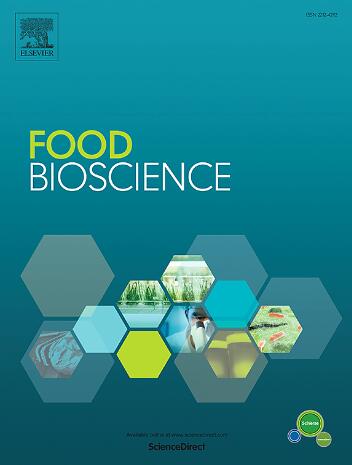食品和饲料中真菌毒素的预防和解毒:综述
IF 5.9
1区 农林科学
Q1 FOOD SCIENCE & TECHNOLOGY
引用次数: 0
摘要
真菌毒素是由各种真菌产生的有毒次生代谢物,主要包括镰刀菌、曲霉和青霉,在全球不同的食品和动物饲料中都有发现。这些物质由于其致癌性、遗传毒性、致畸性、肾毒性和肝毒性,对人类和动物都存在重大的健康风险。这些毒素在收获和储存过程中污染食品和饲料产品,影响总量高达50%,并造成重大经济损失。这一问题的财政影响不仅包括与处理受污染食品有关的费用,而且还包括总体粮食生产力的降低。对人类和动物健康构成严重风险的主要真菌毒素类型包括黄曲霉毒素、伏马菌素、赭曲霉毒素、玉米赤霉烯酮、曲霉烯、麦角生物碱和展霉素。物理和化学方法对食品质量的影响、它们的环境毒性、成本影响和残留的可能性,以及对生产与生物过程一致性的关注,都是限制因素。生物技术的进步有望为今后的改进提供最大的潜力。本文综述了利用物理、化学和生物方法减少或消除食品和饲料中真菌毒素的最新技术。本文章由计算机程序翻译,如有差异,请以英文原文为准。
Prevention and detoxification of mycotoxins in food and feed: A review
Mycotoxins are toxic secondary metabolites produced by various species of fungi, including mainly Fusarium spp., Aspergillus spp., and Penicillium spp., which are found globally in different foods and animal feed. These substances present significant health risks to both humans and animals due to their carcinogenic, genotoxic, teratogenic, nephrotoxic, and hepatotoxic properties. These toxins contaminate food and feed products during the harvesting and storage process, affecting up to 50 % of the total and causing significant economic losses. The financial impact of this issue includes not only the costs associated with disposing of contaminated food but also a reduction in overall food productivity. The main types of mycotoxins that pose serious risks to both human and animal health include aflatoxins, fumonisins, ochratoxins, zearalenone, trichothecenes, ergot alkaloids and patulin. The impact of physical and chemical methods on food quality, their environmental toxicity, cost implications, and potential for leaving residues, as well as concerns about the consistency of production with biological processes, are among the limitations. Advances in biotechnology are expected to offer the greatest potential for future improvements. This review aims to highlight the latest techniques used to reduce or eliminate mycotoxins in food and feed materials using physical, chemical, and biological methods.
求助全文
通过发布文献求助,成功后即可免费获取论文全文。
去求助
来源期刊

Food Bioscience
Biochemistry, Genetics and Molecular Biology-Biochemistry
CiteScore
6.40
自引率
5.80%
发文量
671
审稿时长
27 days
期刊介绍:
Food Bioscience is a peer-reviewed journal that aims to provide a forum for recent developments in the field of bio-related food research. The journal focuses on both fundamental and applied research worldwide, with special attention to ethnic and cultural aspects of food bioresearch.
 求助内容:
求助内容: 应助结果提醒方式:
应助结果提醒方式:


